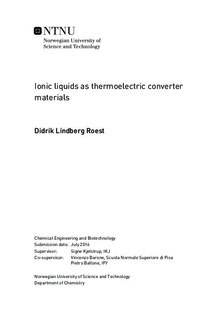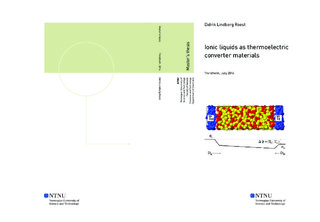| dc.description.abstract | The interplay of heat flow and electrification phenomena at solid/fluid interfaces gives origin to intriguing effects such as Peltier's and Seebeck's, which is of great interest for applications such as production of electricity from waste heat, and represents a source of fascinating problems in statistical mechanics of non-equilibrium systems.
My Master thesis is devoted to the computational investigation by molecular dynamic (MD) simulation of the Seebeck effect, consisting in the creation of an electrostatic potential difference between two electrodes kept at different temperature and immersed into a conducting (electrolyte solution or molten
salt) fluid.
Preliminary results of simulations based on idealised models show that MD is (barely) able to capture the essential feature of this effect, and thus provides a microscopic view of this phenomenon that could ease its understanding. More realistic models are being developed and tested aiming at the investigation of the Seebeck effect in organic conducting compounds that are fluid at relatively low temperature.
Two different models for ionic liquids have been investigated in this thesis. The first model consist of rigid ion particles, generalised to fit a variety of systems. The dependence of temperature, size- and charge-assymetry on the interfacial dipole were investigated. The second model was designed to be more realistic, and focuses on alkali carbonates.
In this report we present computations of transport properties for the alkali carbonates Li2CO3, Na2CO3 and K2CO3 at temperatures between 1200 K and 1500 K. This includes thermal and electrical conductivity, in addition to the diffusion coefficient for cations and anions. For these same compounds in between planar walls, an investigation of the interfacial dipole were carried out. The results provide important information to interpret data acquired in real life experiments. | |

